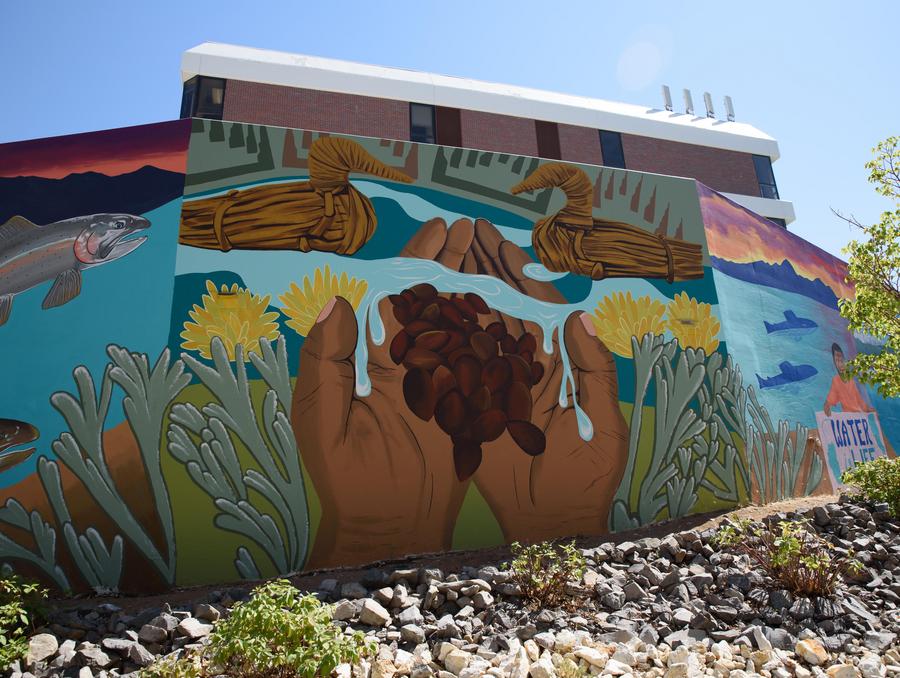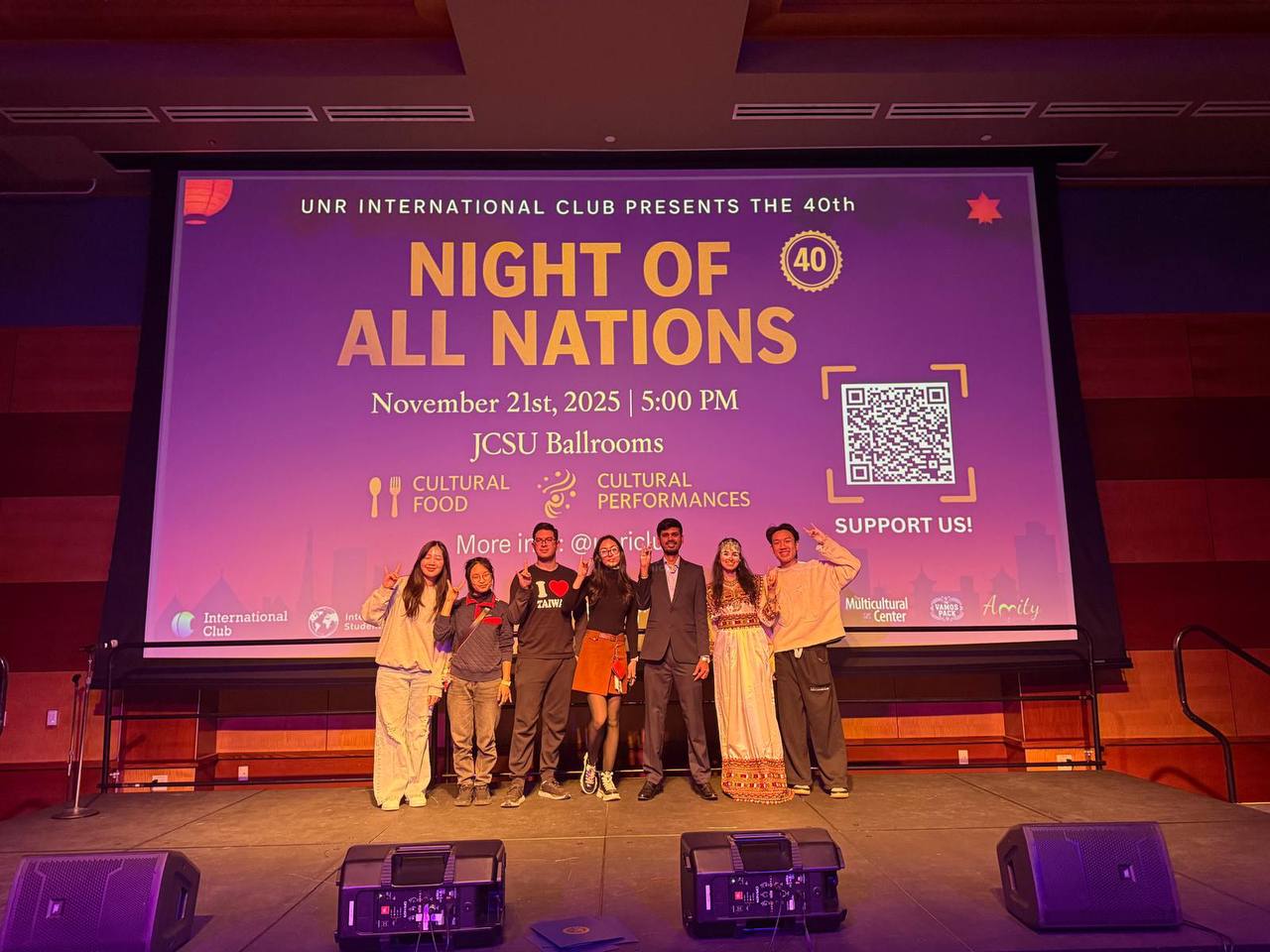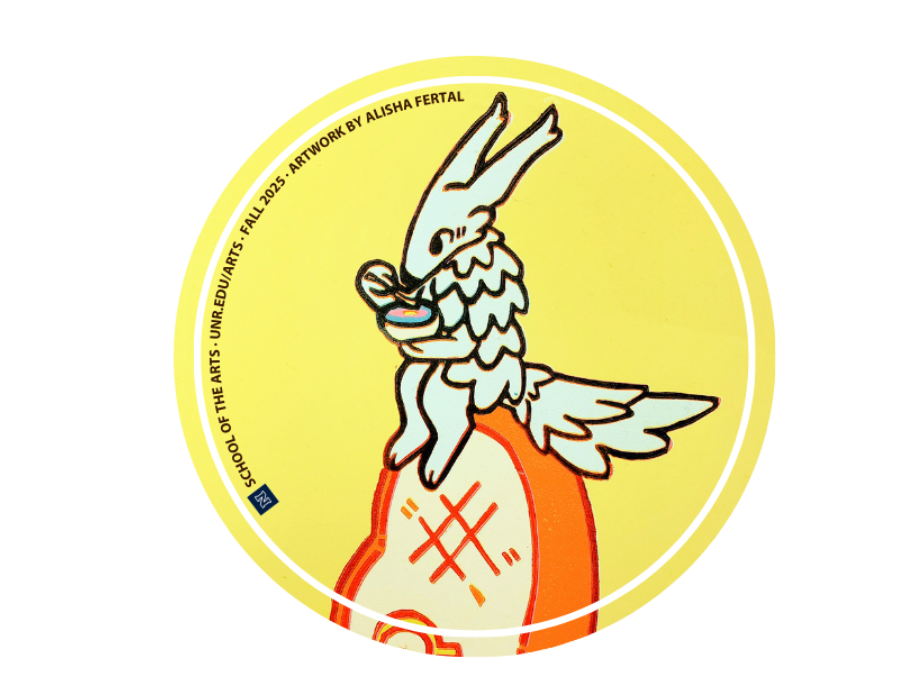It’s important to create physical spaces that honor, respect and create a sense of community for Native students on campus, says Daphne Emm Hooper, director of Indigenous Relations for the University of Nevada, Reno.
Emm Hooper is excited to celebrate the completion of the Great Basin Mural, located outside of the Ansari Business building between the Pennington Student Achievement Center, a high-traffic area. The mural was commissioned by the University’s Office of Indigenous Relations and alumna Autumn Harry was selected as the artist.
“This mural will help build a sense of belonging for our students on campus as well as faculty. It will help build a connection to our community both within the University and the outside community, as well,” Emm Hooper said. “We’re excited to see a large presence right in the heart of campus, to help begin to tell those stories.”
In this video, Emm Hooper and University President Brian Sandoval touch on the importance of this inspiring and impactful piece to campus and to the wider community.
“This mural is a space for all people to gather, reflect, remember and celebrate the Indigenous people,” President Sandoval said.
Students are featured in the video reflecting on how the mural makes them feel.
“I hope the mural inspires not only curiosity but dialogue surrounding Native American Heritage, reparations and the environment,” Jamiika Thomas, an enrolled tribal member and student, said. “What I appreciate about the mural is, for me, it has evoked a lot of reflection, and I hope it also does the same for visitors and our students.”
In the video the artist, Autumn Harry, also addresses her inspiration for the piece and the importance of the connection it holds to the past, the present and the future.
You can also watch Harry describe each of the four panels and the meaning behind them on The Great Basin Mural webpage.
So, I'm really excited to tell you about the new Native American mural at the University of Nevada, Reno. It will help build a sense of belonging for our students who are on campus, as well as faculty. It'll also create a connection to the community, both the community within the University and the outside community as well.
It's important for people to get a better understanding about our native communities, and this is one piece that can help do that. So, we're excited to see a large presence right in the heart of campus. And to help begin to tell those stories. This mural is a space for all people to gather, reflect, remember, and celebrate the Indigenous people.
This wonderful mural celebrates the proud heritage of the Great Basin tribes and also helps us all come together to envision an exciting future. This is a mural for the ages, a testament to the power of joy, of dedication, and of protecting our communities for future generations. I'm from Pyramid Lake, I'm both Paiute and Navajo, and have spent my whole life at the terminal end of the Truckee River watershed.
So, the meaning of this mural is really focused on the protection of water. And I wanted the Truckee River watershed to be the main focal point of this piece. I hope that this will kind of bring an awareness of the Indigenous peoples who are still here, who are still advocating and protecting lands and water. And for my own communities, like, I really, I want them to be proud of this, and I want them to see themselves represented within this artwork and their children and their future grandchildren represented within this artwork.
I do see myself and my tribe in the mural. It was really important for this mural to be a transition piece and to tell a story. And I think what Autumn did, definitely accomplished that in the symbolism, in each panel, one piece of the mural that stands out to me is also the phrase "Honoring our future".
What I appreciate about that is, for me, it has evoked a lot of reflection, and I hope it also does the same for, visitors and our students on campus as well. And when I'm reflecting on it, I find myself asking, is this something I'm doing in my everyday life? A specific part of the mural that speaks to me is particularly the women and children in it.
Like women in our communities represent so much of our culture, a lot of the time they are super involved in language revitalization. They keep the culture alive. And of course, like the children, they're the future. And also having like the element of like having elders in it. They also represent our future at the same time, because the people that hold their culture together. It's important for students to feel like they belong, in an environment.
And there are many ways to do that, right? We can have faculty that look like them, we can have administrators that look like them, we can have other students around. And one area I think that is also important is through art, having physical spaces that honor and respect and create a sense of community for our native students.
And even just thinking about all of the students, faculty, people who will be walking by and seeing this mural, I think it makes me really excited because I think people need to continue educating themselves not only about the watershed, but about the lands that they're living, going to school, working on. I do think the mural, does help to inspire and strengthen sense of belonging on campus.
Not only for Native American students, but also for faculty and for visitors as well. I don't think, everyone immediately understands the historical context in which, the University is situated within the community. So, I hope that the mural inspires, not only curiosity, but dialog surrounding Native American heritage, reparations and as well, the environment.
I think it does bring a sense of belonging here. And we know that these are our homelands. I just really wanted our own native communities from the Great Basin to feel represented, to feel like they have a place here. And I want them to feel at home at the University.
















